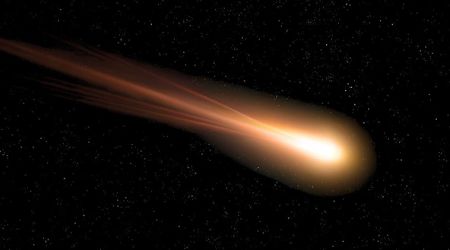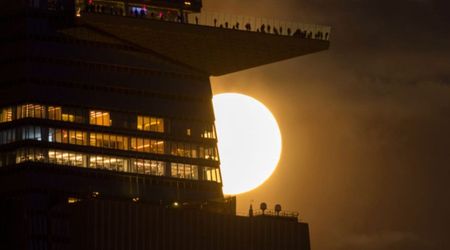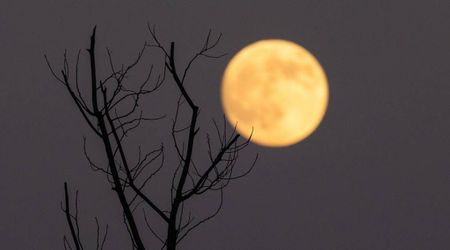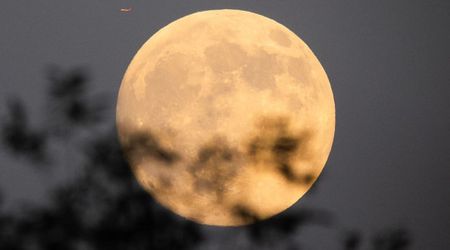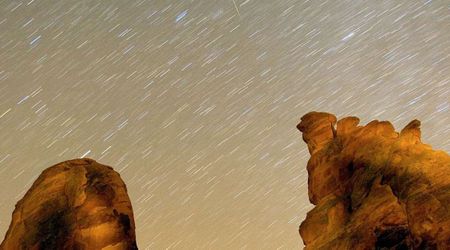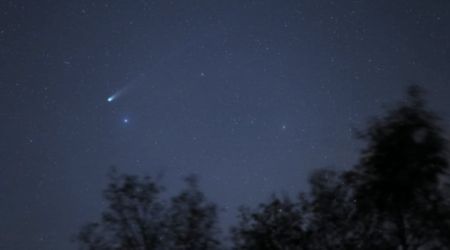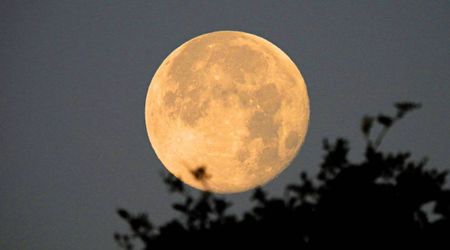Messier Catalog

You may have encountered the words "Messier Objects" or "Messier Catalog" quite often if you read astronomy articles or listen to space podcasts regularly. If you have a keen interest in astrophotography, you may know that some deep-sky objects have a common name and a Messier number, such as the Orion Nebula (M42), the Roulette Galaxy (101) or even the Pleiades (M45).
But what is the messier catalog? Who created it and what is its purpose? Let’s find out.
WHAT IS IT? WHAT IS ITS PURPOSE? THE MESSIER CATALOG INFOGRAPHICWhat is the messier catalog?
The messier catalog is an index of the different objects in the night sky that can be observed with a telescope, a pair of binoculars and sometimes with the naked eye. The list was created by the French astronomer Charles Messier, and was first published under the name “Catalogue des Nébuleuses et des Amas d'Étoiles.”

In essence, the messier catalog lists the most spectacular celestial objects that you can observe from your backyard. It classifies those deep sky objects into 5 categories:
- Diffuse nebulae
- Planetary nebulae
- Open clusters
- Globular clusters
- Galaxies
There are 110 astronomical objects listed in the Messier catalog: 40 galaxies, 29 globular clusters, 27 open clusters, 6 diffuse nebulae, 4 planetary nebulae. The list also contains a few stand-alone objects: 1 supernova remnant, 1 asterism, 1 double star, and 1 Milky Way patch.
The very first version of the Messier catalog was published in 1774 and contained a total of 45 items. It has gone through different versions over the years, and additional entries have been added to each new version. By 1781, the catalog had grown to 103 objects!
It is believed that 17 of these objects were actually discovered by Messier. What is incredible is that Charles discovered all of these objects with a small 100 mm (4-inch) refractor telescope. Nowadays, a 4-inch telescope is classified as an entry-level telescope…
What is its purpose?
Charles concentrated on searching for comets and, while obsessively observing the night sky, he naturally came across many other celestial objects. So he decided to catalogue them in order to differentiate them from the comets he was looking for. The primary purpose of the catalogue was simply to make a note of these deep sky objects so that they would not be confused with comets, which is what Messier just wanted to discover.
A few centuries later, the catalog became a reference for many professional and amateur astronomers. The list is particularly popular with astrophotographers who often engage in a "messier marathon", where they try to photograph the best possible image of each messier object.
List of Messier Objects
The table below contains all the celestial objects recorded in the messier catalog so far. This can be a useful tool for planning your deep sky observation. Below are the column descriptions:
- M: Messier object number in the catalog.
- NGC: The object's number in the New General Catalog.
- Type: The object classification.
- Cons: The constellation in which the object can be found.
- RA: Right ascension in hours and minutes.
- Dec: Declination in degrees and minutes
- Mag: Apparent magnitude.
- Size: Angular size in arc-minutes.
- Dist: Distance from us in light-years.
- Viewing season: Best season for observing this object.
- Viewing difficulty: How hard or easy it is to observe this object with a medium-range telescope.
You can download this table as a CSV file or Excel sheet here.
| M | NGC | TYPE | CONS | RA | DEC | MAG | SIZE | DIST (ly) | VIEWING SEASON | VIEWING DIFFICULTY | ||
|---|---|---|---|---|---|---|---|---|---|---|---|---|
| M1 | NGC 1952 Crab Nebula | Supernova Remnant | Taurus | 5h 34.5m | +22°1 | 8.4 | 6.0x4.0 | 6,300 | Winter | Moderate | ||
| M2 | NGC 7089 | Globular Cluster | Aquarius | 21h 33.5m | -0°49 | 6.5 | 12.9 | 37 | 500” | Autumn | Easy | |
| M3 | NGC 5272 | Globular Cluster | Canes Venatici | 13h 42.2m | +28°23 | 6.2 | 16.2 | 33,900 | Spring | Easy | ||
| M4 | NGC 6121 | Globular Cluster | Scorpius | 16h 23.6m | -26°32 | 5.6 | 26.3 | 7,200 | Summer | Hard | ||
| M5 | NGC 5904 | Globular Cluster | Serpens Caput | 15h 18.6m | +2°5 | 5.6 | 17.4 | 24,500 | Summer | Very Easy | ||
| M6 | NGC 6405 Butterfly Cluster | Open Cluster | Scorpius | 17h 40.1m | -32°13 | 5.3 | 25 | 2,000 | Summer | Easy | ||
| M7 | NGC 6475 Ptolemy¹s Cluster | Open Cluster | Scorpius | 17h 53.9m | -34°49 | 4.1 | 80 | 800 | Summer | Easy | ||
| M8 | NGC 6523 Lagoon Nebula | Diffuse Nebula | Sagittarius | 18h 3.8m | -24°23 | 6 | 90x40 | 5,200 | Summer | Moderate | ||
| M9 | NGC 6333 | Globular Cluster | Ophiucus | 17h 19.2m | -18°31 | 7.7 | 9.3 | 26,700 | Summer | Moderate | ||
| M10 | NGC 6254 | Globular Cluster | Ophiucus | 16h 57.1m | -4°6 | 6.6 | 15.1 | 14,400 | Summer | Moderate | ||
| M11 | NGC 6705 Wild Duck Cluster | Open Cluster | Scutum | 18h 51.1m | -6°16 | 6.3 | 14 | 6,000 | Summer | Very Easy | ||
| M12 | NGC 6218 | Globular Cluster | Ophiucus | 16h 47.2m | -1°57 | 6.7 | 14.5 | 16,000 | Summer | Moderate | ||
| M13 | NGC 6205 Hercules Globular Cluster | Globular Cluster | Hercules | 16h 41.7m | +36°28 | 5.8 | 16.6 | 22,800 | Summer | Very Easy | ||
| M14 | NGC 6402 | Globular Cluster | Ophiucus | 17h 37.6m | -3°15 | 7.6 | 11.7 | 27,400 | Summer | Moderate | ||
| M15 | NGC 7078 | Globular Cluster | Pegasus | 21h 30m | +12°10 | 6.2 | 12.3 | 33,600 | Autumn | Easy | ||
| M16 | NGC 6611 Eagle Nebula Cluster | Open Cluster | Serpens Claudia | 18h 18.8m | -13°47 | 6.4 | 7 | 7,000 | Summer | Easy | ||
| M17 | NGC 6618 Omega, Swan, Horseshoe Nebula | Diffuse Nebula | Sagittarius | 18h 20.8m | -16°11 | 7 | 11 | 5,000 | Summer | Easy | ||
| M18 | NGC 6613 | Open Cluster | Sagittarius | 18h 19.9m | -17°8 | 7.5 | 9 | 4,900 | Summer | Moderate | ||
| M19 | NGC 6273 | Globular Cluster | Ophiucus | 17h 2.6m | -26°16 | 6.8 | 13.5 | 27,100 | Summer | Moderate | ||
| M20 | NGC 6514 Trifid Nebula | Diffuse Nebula | Sagittarius | 18h 2.3m | -23°2 | 9 | 28 | 5,200 | Summer | Very Hard | ||
| M21 | NGC 6531 | Open Cluster | Sagittarius | 18h 4.6m | -22°30 | 6.5 | 13 | 4,250 | Summer | Moderate | ||
| M22 | NGC 6656 | Globular Cluster | Sagittarius | 18h 36.4m | -23°54 | 5.1 | 24 | 10,100 | Summer | Very Easy | ||
| M23 | NGC 6494 | Open Cluster | Sagittarius | 17h 56.8m | -19°1 | 6.9 | 27 | 2,150 | Summer | Easy | ||
| M24 | NGC 6603 Milky Way Patch | Star Cloud | Sagittarius | 18h 18.4m | -18°25 | 4.6 | 90 | 10,000 | Summer | Moderate | ||
| M25 | IC 4725 | Open Cluster | Sagittarius | 18h 31.7m | -19°14 | 6.5 | 40 | 2,000 | Summer | Easy | ||
| M26 | NGC 6694 | Open Cluster | Scutum | 18h 45.2m | -9°24 | 8 | 15 | 5,000 | Summer | Moderate | ||
| M27 | NGC 6853 Dumbbell Nebula | Planetary Nebula | Vulpecula | 19h 59.6m | +22°43 | 7.4 | 8.0x5.7 | 1,250 | Summer | Easy | ||
| M28 | NGC 6626 | Globular Cluster | Sagittarius | 18h 24.5m | -24°52 | 6.8 | 11.2 | 17,900 | Summer | Easy | ||
| M29 | NGC 6913 | Open Cluster | Cygnus | 20h 23.9m | +38°32 | 7.1 | 7 | 4,000 | Summer | Easy | ||
| M30 | NGC 7099 | Globular Cluster | Capricornus | 21h 40.4m | -23°11 | 7.2 | 11 | 24,800 | Autumn | Easy | ||
| M31 | NGC 224 Andromeda Galaxy | Spiral Galaxy | Andromeda | 0h 42.7m | +41°16 | 3.4 | 178x63 | 2,900,000 | Autumn | Easy | ||
| M32 | NGC 221 Satellite of M31 | Elliptical Galaxy | Andromeda | 0h 42.7m | +40°52 | 8.1 | 8x6 | 2,900,000 | Autumn | Easy | ||
| M33 | NGC 598 Triangulum/Pinwheel Galaxy | Spiral Galaxy | Triangulum | 1h 33.9m | +30°39 | 5.7 | 73x45 | 3,000,000 | Autumn | Hard | ||
| M34 | NGC 1039 | Open Cluster | Perseus | 2h 42m | +42°47 | 5.5 | 35 | 1,400 | Autumn | Easy | ||
| M35 | NGC 2168 | Open Cluster | Gemini | 6h 8.9m | +24°20 | 5.3 | 28 | 2,800 | Winter | Very Easy | ||
| M36 | NGC 1960 | Open Cluster | Auriga | 5h 36.1m | +34°8 | 6.3 | 12 | 4,100 | Winter | Easy | ||
| M37 | NGC 2099 | Open Cluster | Auriga | 5h 52.4m | +32°33 | 6.2 | 24 | 4,400 | Winter | Easy | ||
| M38 | NGC 1912 | Open Cluster | Auriga | 5h 28.7m | +35°50 | 7.4 | 21 | 4,200 | Winter | Easy | ||
| M39 | NGC 7092 | Open Cluster | Cygnus | 21h 32.2m | +48°26 | 5.2 | 32 | 825 | Autumn | Easy | ||
| M40 | Winecke 4 | Double Star | Ursa Major | 12h 22.2m | +58°5 | 9.3 | 49 | 510 | Spring | Easy | ||
| M41 | NGC 2287 | Open Cluster | Canis Major | 6h 47m | -20°44 | 4.6 | 38 | 2,300 | Winter | Easy | ||
| M42 | NGC 1976 Great Orion Nebula | Diffuse Nebula | Orion | 5h 35.4m | -5°27 | 4 | 85x60 | 1,600 | Winter | Very Easy | ||
| M43 | NGC 1982 de Mairan¹s Nebula | Diffuse Nebula | Orion | 5h 35.6m | -5°16 | 9 | 20x15 | 1,600 | Winter | Easy | ||
| M44 | NGC 2632 Beehive Cluster (Praesepe) | Open Cluster | Cancer | 8h 40.1m | +19°59 | 3.7 | 95 | 577 | Winter | Easy | ||
| M45 | Pleiades, Subaru, Seven Sisters | Open Cluster | Taurus | 3h 47m | +24°7.2 | 1.6 | 110 | 380 | Winter | Very Easy | ||
| M46 | NGC 2437 | Open Cluster | Puppis | 7h 41.8m | -14°49 | 6 | 27 | 5,400 | Winter | Easy | ||
| M47 | NGC 2422 | Open Cluster | Puppis | 7h 36.6m | -14°30 | 5.2 | 30 | 1,600 | Winter | Easy | ||
| M48 | NGC 2548 | Open Cluster | Hydra | 8h 13.8m | -5°48 | 5.5 | 54 | 1,500 | Winter | Easy | ||
| M49 | NGC 4472 | Elliptical Galaxy | Virgo | 12h 29.8m | +8°0 | 8.4 | 9x7.5 | 60,000,000 | Spring | Moderate | ||
| M50 | NGC 2323 | Open Cluster | Monocerus | 7h 3.2m | -8°20 | 6.3 | 16 | 3,000 | Winter | Easy | ||
| M51 | NGC 5194 Whirlpool Galaxy | Spiral Galaxy | Canes Venatici | 13h 29.9m | +47°12 | 8.4 | 11x7 | 37,000,000 | Spring | Moderate | ||
| M52 | NGC 7654 | Open Cluster | Cassiopeia | 23h 24.2m | +61°35 | 7.3 | 13 | 5,000 | Autumn | Easy | ||
| M53 | NGC 5024 | Globular Cluster | Coma Berenices | 13h 12.9m | +18°10 | 7.6 | 12.6 | 56,400 | Spring | Easy | ||
| M54 | NGC 6715 | Globular Cluster | Sagittarius | 18h 55.1m | -30°29 | 7.6 | 9.1 | 82,800 | Summer | Moderate | ||
| M55 | NGC 6809 | Globular Cluster | Sagittarius | 19h 40m | -30°58 | 6.3 | 19 | 16,600 | Summer | Hard | ||
| M56 | NGC 6779 | Globular Cluster | Lyra | 19h 16.6m | +30°11 | 8.3 | 7.1 | 31,600 | Summer | Moderate | ||
| M57 | NGC 6720 Ring Nebula | Planetary Nebula | Lyra | 18h 53.6m | +33°2 | 8.8 | 1.4x1 | 4,100 | Summer | Easy | ||
| M58 | NGC 4579 | Spiral Galaxy | Virgo | 12h 37.7m | +11°49 | 9.7 | 5.5x4.5 | 60,000,000 | Spring | Moderate | ||
| M59 | NGC 4621 | Elliptical Galaxy | Virgo | 12h 42m | +11°39 | 9.6 | 5x3.5 | 60,000,000 | Spring | Hard | ||
| M60 | NGC 4649 | Elliptical Galaxy | Virgo | 12h 43.7m | +11°33 | 8.8 | 7x6 | 60,000,000 | Spring | Moderate | ||
| M61 | NGC 4303 | Spiral Galaxy | Virgo | 12h 21.9m | +4°28 | 9.7 | 6x5.5 | 60,000,000 | Spring | Hard | ||
| M62 | NGC 6266 | Globular Cluster | Ophiucus | 17h 1.2m | -30°7 | 6.5 | 14.1 | 21,500 | Summer | Moderate | ||
| M63 | NGC 5055 Sunflower Galaxy | Spiral Galaxy | Canes Venatici | 13h 15.8m | +42°2 | 8.6 | 10x6 | 37,000,000 | Spring | Moderate | ||
| M64 | NGC 4826 Blackeye Galaxy | Spiral Galaxy | Coma Berenices | 12h 56.7m | +21°41 | 8.5 | 9.3x5.4 | 19,000,000 | Spring | Moderate | ||
| M65 | NGC 3623 | Spiral Galaxy | Leo | 11h 18.9m | +13°5 | 9.3 | 8x1.5 | 35,000,000 | Spring | Moderate | ||
| M66 | NGC 3627 | Spiral Galaxy | Leo | 11h 20.2m | +12°59 | 8.9 | 8x2.5 | 35,000,000 | Spring | Easy | ||
| M67 | NGC 2682 | Open Cluster | Cancer | 8h 50.4m | +11°49 | 6.1 | 30 | 2,700 | Winter | Easy | ||
| M68 | NGC 4590 | Globular Cluster | Hydra | 12h 39.5m | -26°45 | 7.8 | 12 | 33,300 | Spring | Very Hard | ||
| M69 | NGC 6637 | Globular Cluster | Sagittarius | 18h 31.4m | -32°21 | 7.6 | 7.1 | 26,700 | Summer | Moderate | ||
| M70 | NGC 6681 | Globular Cluster | Sagittarius | 18h 43.2m | -32°18 | 7.9 | 7.8 | 28,000 | Summer | Moderate | ||
| M71 | NGC 6838 | Globular Cluster | Sagitta | 19h 53.8m | +18°47 | 8.3 | 7.2 | 11,700 | Summer | Moderate | ||
| M72 | NGC 6981 | Globular Cluster | Aquarius | 20h 53.5m | -12°32 | 9.3 | 5.9 | 52,800 | Summer | Moderate | ||
| M73 | NGC 6994 Group of 4 stars | Group/Asterism | Aquarius | 20h 59m | -12°38 | 9 | 2.8 | 2,000 | Summer | Hard | ||
| M74 | NGC 628 | Spiral Galaxy | Pisces | 1h 36.7m | +15°47 | 9.4 | 10.2x9.5 | 35,000,000 | Autumn | Very Hard | ||
| M75 | NGC 6864 | Globular Cluster | Sagittarius | 20h 6.1m | -21°55 | 8.5 | 6 | 57,700 | Summer | Moderate | ||
| M76 | NGC 650 Little Dumbell, Cork, Butterfly Nebula | Planetary Nebula | Perseus | 1h 42.3m | +51°34 | 10.1 | 2.7x1.8 | 3,400 | Autumn | Moderate | ||
| M77 | NGC 1068 Cetus A | Spiral Galaxy | Cetus | 2h 42.7m | +0°1 | 8.9 | 7x6 | 60,000,000 | Autumn | Moderate | ||
| M78 | NGC 2068 | Diffuse Nebula | Orion | 5h 46.7m | +0°3 | 8.3 | 8x6 | 1,600 | Winter | Moderate | ||
| M79 | NGC 1904 | Globular Cluster | Lepus | 5h 24.5m | -24°33 | 7.7 | 8.7 | 41,100 | Winter | Moderate | ||
| M80 | NGC 6093 | Globular Cluster | Scorpius | 16h 17m | -22°59 | 7.3 | 8.9 | 27,400 | Summer | Easy | ||
| M81 | NGC 3031 Bode¹s Galaxy | Spiral Galaxy | Ursa Major | 9h 55.6m | +69°4 | 6.9 | 21x10 | 12,000,000 | Spring | Easy | ||
| M82 | NGC 3034 Cigar Galaxy | Irregular Galaxy | Ursa Major | 9h 55.8m | +69°41 | 8.4 | 9.x4 | 12,000,000 | Spring | Easy | ||
| M83 | NGC 5236 Southern Pinwheel Galaxy | Spiral Galaxy | Hydra | 13h 37m | -29°52 | 7.6 | 11x10 | 15,000,000 | Spring | Hard | ||
| M84 | NGC 4374 | Lenticular (S0) Galaxy | Virgo | 12h 25.1m | +12°53 | 9.1 | 5 | 60,000,000 | Spring | Moderate | ||
| M85 | NGC 4382 | Lenticular (S0) Galaxy | Coma Berenices | 12h 25.4m | +18°11 | 9.1 | 7.1x5.2 | 60,000,000 | Spring | Moderate | ||
| M86 | NGC 4406 | Lenticular (S0) Galaxy | Virgo | 12h 26.2m | +12°57 | 8.9 | 7.5x5.5 | 60,000,000 | Spring | Moderate | ||
| M87 | NGC 4486 Virgo A | Elliptical Galaxy | Virgo | 12h 30.8m | +12°24 | 8.6 | 7 | 60,000,000 | Spring | Moderate | ||
| M88 | NGC 4501 | Spiral Galaxy | Coma Berenices | 12h 32m | +14°25 | 9.6 | 7x4 | 60,000,000 | Spring | Moderate | ||
| M89 | NGC 4552 | Elliptical Galaxy | Virgo | 12h 35.7m | +12°33 | 9.8 | 4 | 60,000,000 | Spring | Moderate | ||
| M90 | NGC 4569 | Spiral Galaxy | Virgo | 12h 36.8m | +13°10 | 9.5 | 9.5x4.5 | 60,000,000 | Spring | Hard | ||
| M91 | NGC 4548 | Spiral Galaxy | Coma Berenices | 12h 35.4m | +14°30 | 10.2 | 5.4x4.4 | 60,000,000 | Spring | Very Hard | ||
| M92 | NGC 6341 | Globular Cluster | Hercules | 17h 17.1m | +43°8 | 6.4 | 11.2 | 26,400 | summer | Easy | ||
| M93 | NGC 2447 | Open Cluster | Puppis | 7h 44.6m | -23°52 | 6 | 22 | 3,600 | winter | Easy | ||
| M94 | NGC 4736 | Spiral Galaxy | Canes Venatici | 12h 50.9m | +41°7 | 8.2 | 7x3 | 14,500,000 | Spring | Moderate | ||
| M95 | NGC 3351 | Spiral Galaxy | Leo | 10h 44m | +11°42 | 9.7 | 4.4x3.3 | 38,000,000 | Spring | Hard | ||
| M96 | NGC 3368 | Spiral Galaxy | Leo | 10h 46.8m | +11°49 | 9.2 | 6x4 | 38,000,000 | Spring | Moderate | ||
| M97 | NGC 3587 Owl Nebula | Planetary Nebula | Ursa Major | 11h 14.8m | +55°1 | 9.9 | 3.4x3.3 | 2,600 | Spring | Very Hard | ||
| M98 | NGC 4192 | Spiral Galaxy | Coma Berenices | 12h 13.8m | +14°54 | 10.1 | 9.5x3.2 | 60,000,000 | Spring | Very Hard | ||
| M99 | NGC 4254 | Spiral Galaxy | Coma Berenices | 12h 18.8m | +14°25 | 9.9 | 5.4x4.8 | 60,000,000 | Spring | Hard | ||
| M100 | NGC 4321 | Spiral Galaxy | Coma Berenices | 12h 22.9m | +15°49 | 9.3 | 7x6 | 60,000,000 | Spring | Very Hard | ||
| M101 | NGC 5457 Pinwheel Galaxy | Spiral Galaxy | Ursa Major | 14h 3.2m | +54°21 | 7.9 | 22 | 27,000,000 | Spring | Very Hard | ||
| M102 | NGC 5866 Spindle Galaxy | Lenticular (S0) Galaxy | Draco | 15h 6.5m | +55°46 | 9.9 | 5.2x2.3 | 40,000,000 | Summer | Hard | ||
| M103 | NGC 581 | Open Cluster | Cassiopeia | 1h 33.2m | +60°42 | 7.4 | 6 | 8,000 | Autumn | Easy | ||
| M104 | NGC 4594 Sombrero Galaxy | Spiral Galaxy | Virgo | 12h 40m | -11°37 | 8 | 9x4 | 50,000,000 | Spring | Easy | ||
| M105 | NGC 3379 | Elliptical Galaxy | Leo | 10h 47.8m | +12°35 | 9.3 | 2 | 38,000,000 | Spring | Moderate | ||
| M106 | NGC 4258 | Spiral Galaxy | Canes Venatici | 12h 19m | +47°18 | 8.4 | 19x8 | 25,000,000 | Spring | Hard | ||
| M107 | NGC 6171 | Globular Cluster | Ophiucus | 16h 32.5m | -13°3 | 7.9 | 10 | 19,600 | Summer | Hard | ||
| M108 | NGC 3556 | Spiral Galaxy | Ursa Major | 11h 11.5m | +55°40 | 10 | 8x1 | 45,000,000 | Spring | Hard | ||
| M109 | NGC 3992 | Spiral Galaxy | Ursa Major | 11h 57.6m | +53°23 | 9.8 | 7x4 | 55,000,000 | Spring | Hard | ||
| M110 | NGC 205 Satellite of M31 | Elliptical Galaxy | Andromeda | 0h 40.4m | +41°41 | 8.5 | 17x10 | 2,900,000 | Autumn | Hard |
Periodic Table of Deep-Sky Objects
The messier objects are undoubtedly the most observed objects in the night sky by amateur astronomers and astrophotographers. We decided to get a little creative and built this periodic table of deep-sky objects! This table groups all the messier objects by the ease of visibility with a medium-range telescope (8-inch aperture). This infographic is best viewed on a desktop!
You can download this infographic as a PDF here.
If you'd like to purchase the below graphic in printed format, please visit my Redbubble shop

